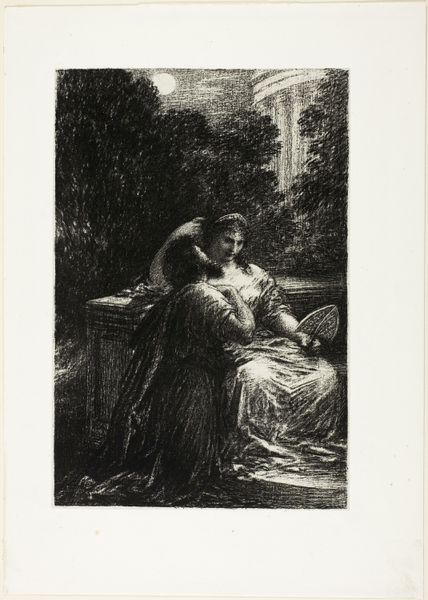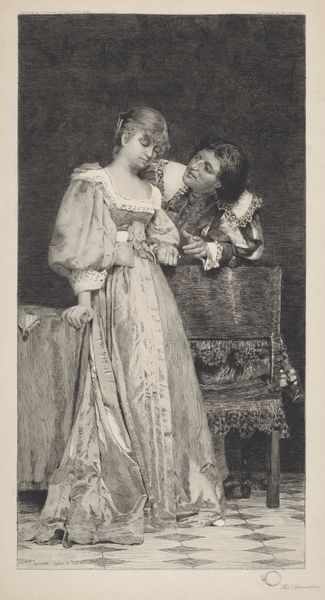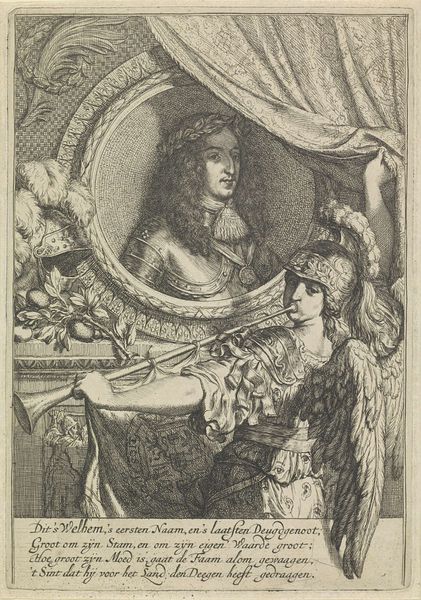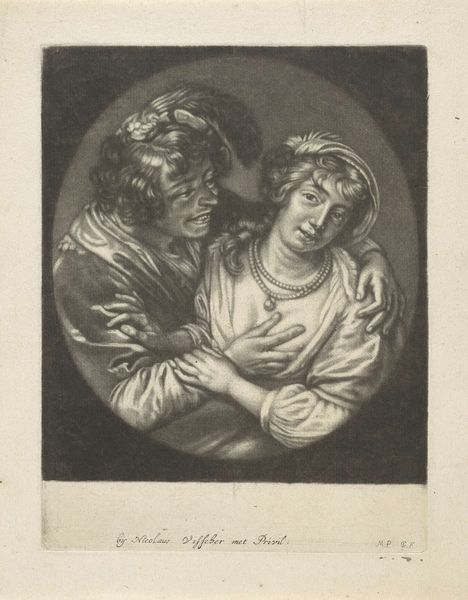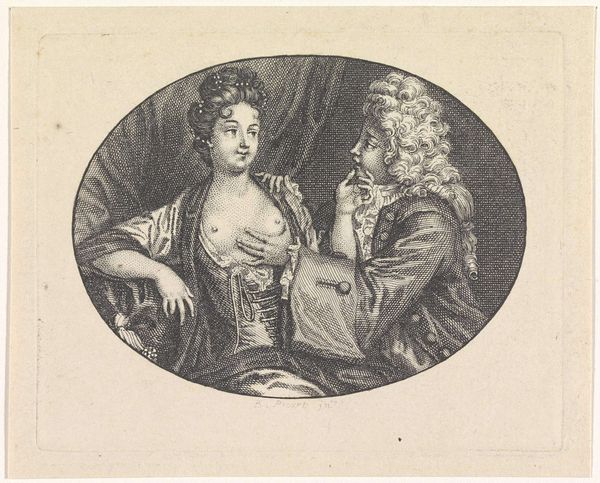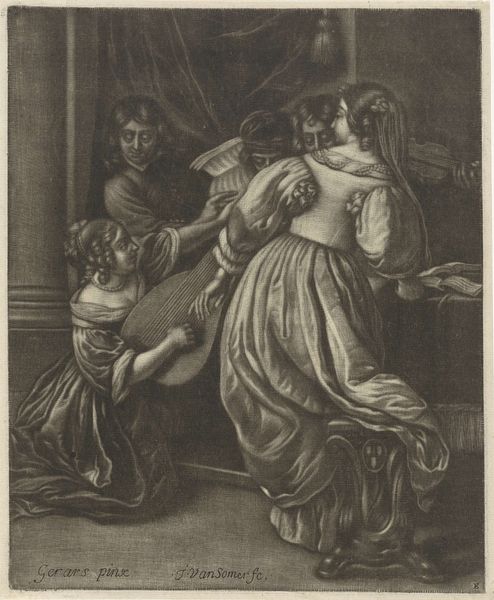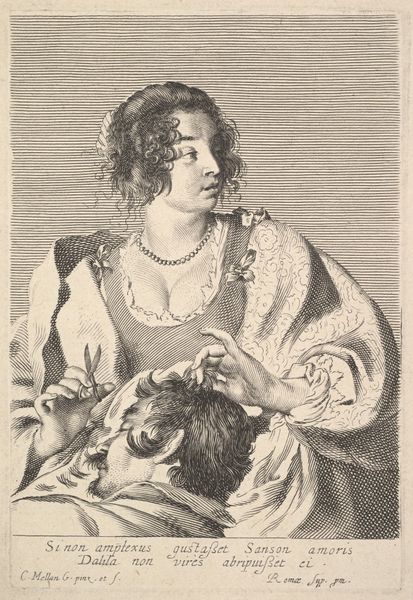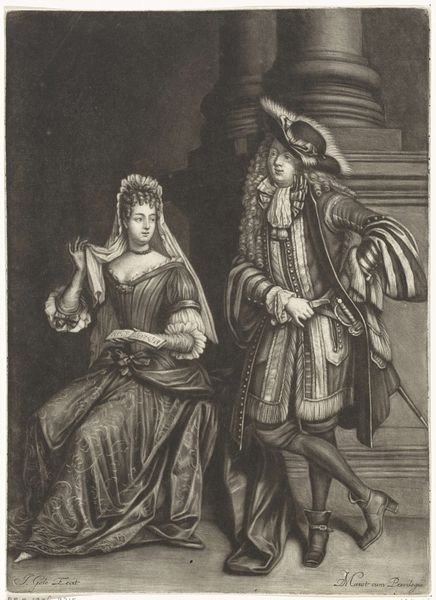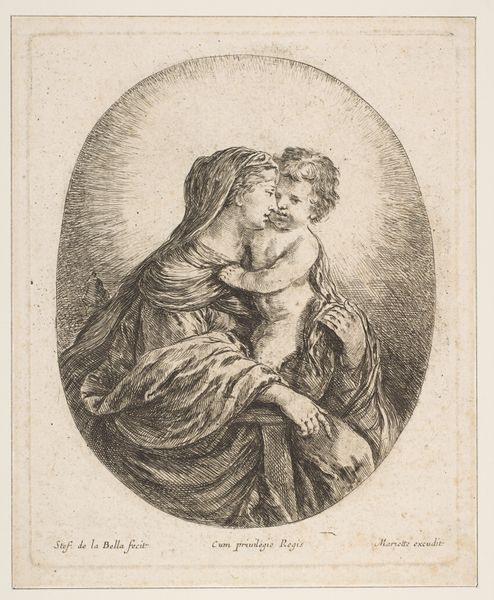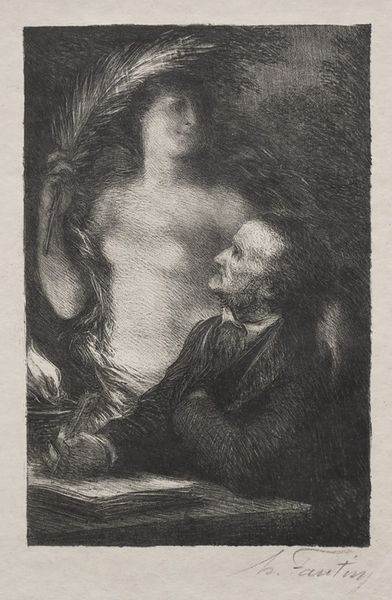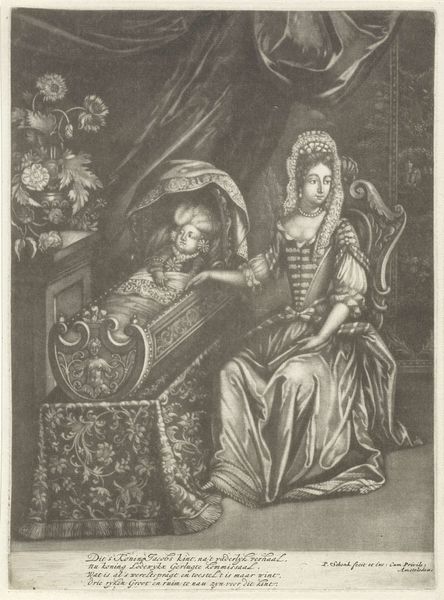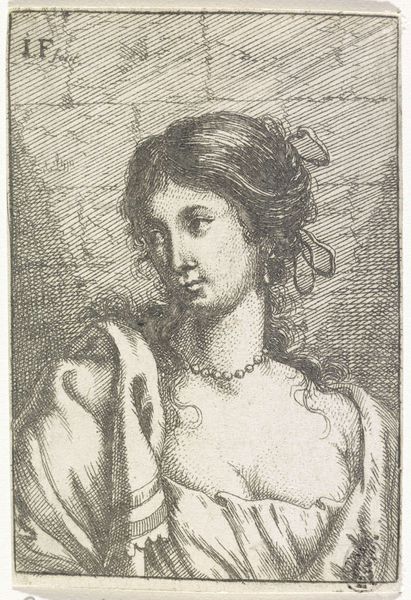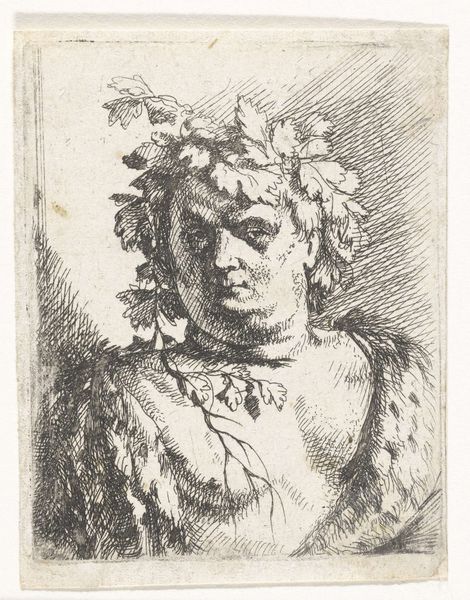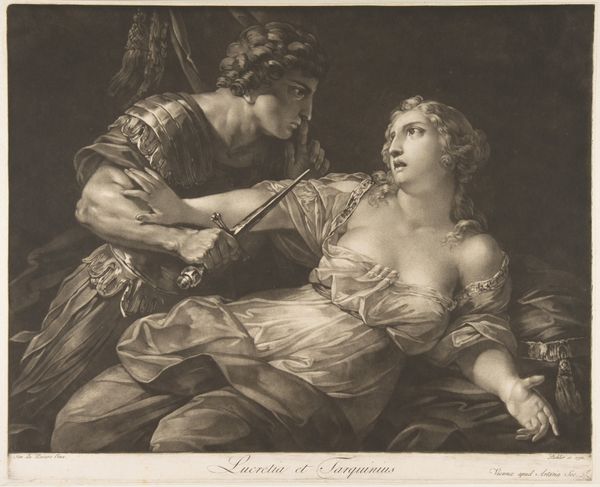
engraving
#
portrait
#
baroque
#
portrait drawing
#
genre-painting
#
engraving
Dimensions: height 224 mm, width 171 mm
Copyright: Rijks Museum: Open Domain
Editor: Here we have Jan van Troyen's engraving, "De moordenaar (Il Bravo)", made sometime between 1673 and 1700. There's a really uneasy tension in this piece. What strikes you most about it? Curator: The work presents an intriguing power dynamic. We see a figure in armour whispering to another, adorned with a laurel wreath, perhaps suggesting triumph or fame. The image resonates with questions of agency and control within systems of power. It reminds me to ask: Who is being silenced, and who benefits from this dynamic? Editor: It's almost theatrical, like a scene from a play. How would this kind of scene resonate with audiences of the Baroque period? Curator: Remember that the Baroque era thrived on drama and spectacle. But it also reinforced social hierarchies and explored human fallibility. "Il Bravo" invites reflection on complicity, challenging viewers to examine their own relationship to power structures. Does the image elicit sympathy for either of the characters? Are we meant to see a victim and perpetrator or are they mutually co-dependent? Editor: I see what you mean. The power is complex and uncomfortable. How does thinking about the historical context shift our understanding of the visual elements, like the armour or the laurel wreath? Curator: The armour is a clear indicator of military or political power. The wreath could symbolize victory, but consider its forced placement and relationship with the gesture of the figure in armor, suggesting imposed honor or coerced recognition. Examining such historical signs encourages dialogue about class, identity, gender, and politics in both historical and present contexts. It urges viewers to question existing societal standards and expectations. Editor: Thinking about it that way makes the piece a lot more than just a historical portrait. Curator: Absolutely. By situating artworks within historical narratives and applying contemporary theoretical frameworks, we reveal their continued relevance in broader cultural and political discussions.
Comments
No comments
Be the first to comment and join the conversation on the ultimate creative platform.
